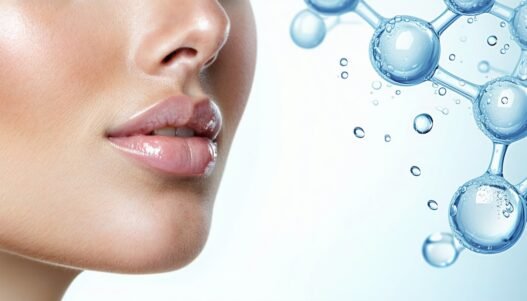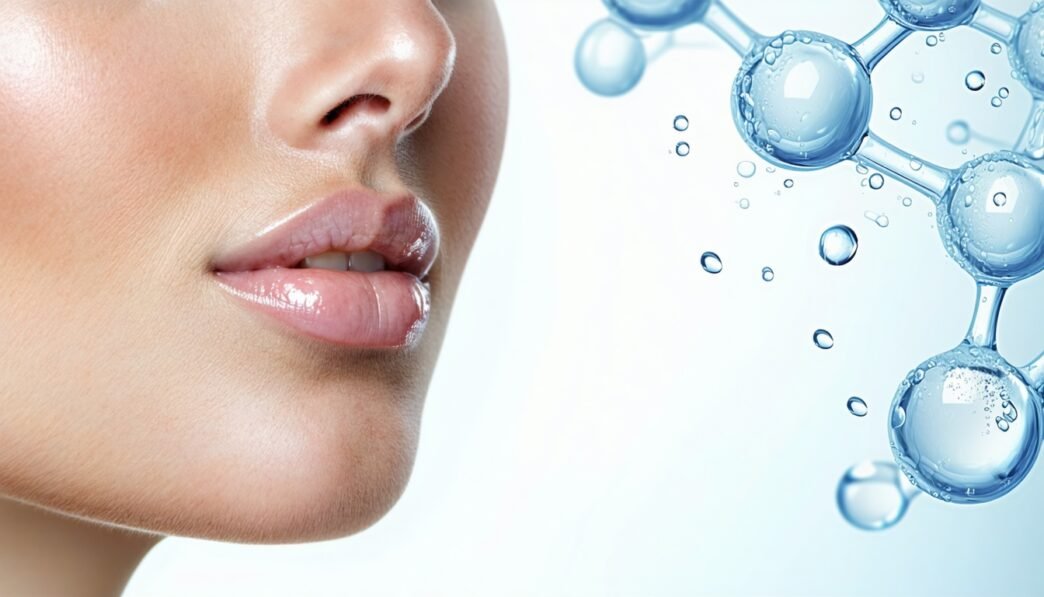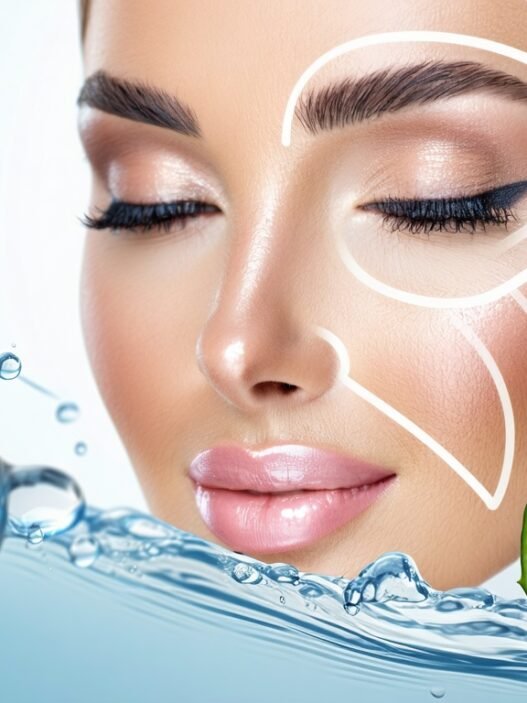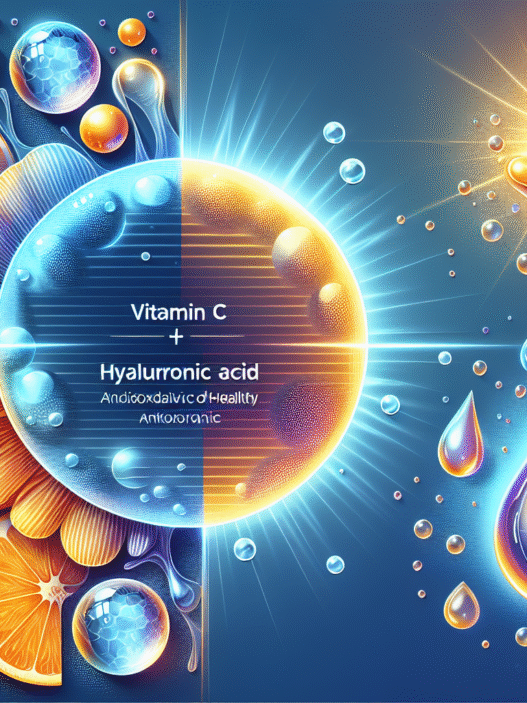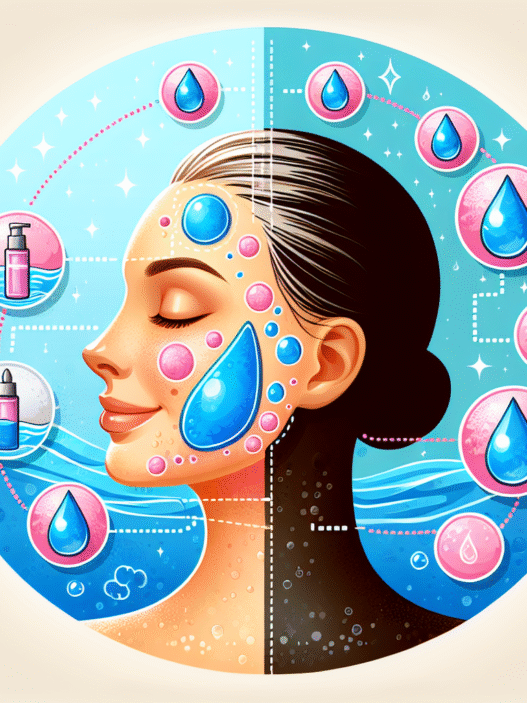Understanding Hyaluronic Acid
Introduction to HA
Hyaluronic acid (HA) is a naturally occurring substance in the body that plays a critical role in skin hydration and elasticity. This powerful compound can hold up to 1,000 times its weight in water, making it an exceptional humectant that helps maintain skin moisture and prevents transepidermal water loss (TEWL) (Healthline). As individuals age, levels of hyaluronic acid in the skin decline, contributing to common aging concerns such as fine lines, wrinkles, and reduced skin elasticity (The Ordinary).
Benefits for Skin
The benefits of hyaluronic acid extend far beyond simple hydration. The following table summarizes some of the key advantages of incorporating HA into skincare routines:
| Benefit | Description |
|---|---|
| Intense Hydration | Draws moisture from the environment and binds it to skin for lasting hydration. |
| Improved Skin Elasticity | Helps maintain skin’s structure by retaining moisture, resulting in a plumper appearance. |
| Soothing Properties | Gentle and suitable for all skin types, making it ideal for sensitive skin. |
| Reduces Fine Lines and Wrinkles | May help minimize the appearance of fine lines as it supports skin hydration and elasticity. |
| Enhances Overall Skin Texture | Contributes to a smoother, more youthful-looking complexion by keeping skin well-moisturized. |
Hyaluronic acid is recognized for its compatibility with various skincare ingredients, including retinol and alpha hydroxy acids (AHAs). However, proper application is crucial, as applying HA on dry skin can lead to dehydration by drawing moisture away from the skin. To learn more about the correct application methods, explore our article on what does hyaluronic acid do to your skin?.
As a versatile and effective skincare ingredient, hyaluronic acid is beneficial for all skin types. Its moisturizing capabilities make it particularly favorable for dry skin. Additionally, understanding its properties and benefits helps individuals address various skin concerns, such as aging and hydration.
Hyaluronic Acid for Skincare
Hyaluronic acid (HA) plays a significant role in skincare, enhancing moisture and providing various benefits for the skin. Understanding its molecular weight, safe application methods, and how to combine it with other ingredients is essential for effective use.
Molecular Weight Importance
The molecular weight of hyaluronic acid is crucial for its effectiveness. Research shows that HA with molecular weights between 50 to 1,000 kDa is most beneficial for the skin, with 130 kDa being particularly effective for improving skin elasticity, wrinkle depth, and roughness. Lower molecular weights can penetrate the skin barrier more easily but may cause inflammation (Healthline).
| Molecular Weight (kDa) | Benefits |
|---|---|
| 50 – 1,000 | Optimal skin improvement |
| 130 | Most effective for skin elasticity |
| >500 | Less effective; higher risk of irritation |
| <500 | Better penetration but potential for inflammation |
Opting for products with a suitable molecular weight can ensure better hydration without adverse reactions.
Safe Application Guidelines
To achieve optimal results with hyaluronic acid, the concentration should be kept below 2 percent. Products with very low molecular weight (approximately 5 kDa) can penetrate deeply, potentially carrying unwanted substances and bacteria into the skin. However, it is worth noting that hyaluronic acid commonly does not cause allergic reactions, as it is naturally produced by the body.
When applying HA, it is essential to use it as part of a well-structured skincare routine. For proper application, consider the following guidelines:
- Apply on damp skin to enhance absorption.
- Follow up with a moisturizer to lock in hydration.
- Use as an individual serum or in combination with other products.
Combination with Other Ingredients
Hyaluronic acid works well with various ingredients, enhancing its hydrating properties. For effective skincare layering, it is advised to apply products from most active to least active, and from thinnest to thickest. This means HA-based serums should be the last in the serum phase of the regimen. Following it up with emollients and occlusives helps seal in moisture (Go-To Skincare).
However, it is important to know which ingredients complement hyaluronic acid. Products like vitamin C can enhance its effects, while certain combinations (e.g., with retinol) may lead to irritation. For details on what not to mix with HA, refer to our article on what not to mix with hyaluronic acid?.
Hyaluronic acid remains a stellar choice for all, especially for those concerned about hydration and skin health. For further information on how HA affects skin issues, check out our discussions on what does hyaluronic acid do to your skin? and does hyaluronic acid help wrinkles?.
Hyaluronic Acid and Skin Concerns
Understanding the relationship between hyaluronic acid and various skin concerns is essential for beauty and skincare enthusiasts. This section examines the impact of hyaluronic acid on aging skin, its interaction with pores, and how it addresses dryness and dehydration.
Impact on Aging Skin
Hyaluronic acid (HA) is a powerful ingredient that hydrates the skin by binding and retaining water. It is naturally occurring in the body, playing a significant role in skincare regimens. As individuals age, levels of HA naturally decrease, leading to concerns like fine lines and reduced skin elasticity. Studies suggest that HA with molecular weights between 50 to 1,000 kDa is most beneficial for improving skin elasticity and reducing wrinkle depth (Healthline).
| Molecular Weight (kDa) | Benefit |
|---|---|
| 50 | Moderate hydration |
| 130 | Optimal improvement in elasticity |
| 500 | Minimal improvement |
| 1,000 | No significant benefits |
Interaction with Pores
A common concern among users is whether hyaluronic acid clogs pores. Hyaluronic acid is known not to clog pores as it acts as a water magnet, keeping the skin hydrated without drawing moisture from deeper layers. This characteristic makes it an excellent choice for various skin types. While some individual reactions may vary, incorporating HA into a routine generally does not lead to pore blockage.
Addressing Dryness and Dehydration
The hydrating properties of hyaluronic acid effectively address skin dryness and dehydration. Its ability to hold significantly more water than its weight allows it to penetrate multiple skin layers. The latest formulations, such as Hyaluronic Acid 2% + B5 (with Ceramides), include various forms of HA that work synergistically to enhance hydration (The Ordinary). Incorporating HA into a daily skincare regimen can help maintain skin moisture levels, ensuring a plump and youthful appearance.
For further information on how different ingredients interact with hyaluronic acid, refer to our guide on what not to mix with hyaluronic acid?.
Effective Use of Hyaluronic Acid
Effective application of hyaluronic acid (HA) is key to maximizing its benefits for skin hydration. This section highlights the application techniques, skincare layering methods, and incorporation into daily regimens.
Application Techniques
For optimal results, hyaluronic acid should be applied to slightly damp skin. This enhances its ability to draw moisture effectively without inadvertently extracting water from the skin itself, which can lead to dehydration (Go-To Skincare). Users can follow these steps for application:
- Cleanse the skin to remove impurities.
- Lightly mist the skin with water or apply a hydrating toner.
- Apply a few drops of hyaluronic acid serum evenly across the face.
- Gently massage the product into the skin.
This technique allows HA to function as a moisture magnet, providing intense hydration by binding water to the skin.
Skincare Layering
The sequence in which skincare products are applied significantly impacts their effectiveness. When incorporating hyaluronic acid into a skincare routine, it should generally be layered according to the following guidelines:
| Layer Type | Example Products | Application Order |
|---|---|---|
| Active Ingredients | Serums (e.g., Vitamin C) | Apply first |
| Humectants | Hyaluronic Acid | Apply next |
| Emollients | Moisturizers | Apply following HA |
| Occlusives | Oils or balms | Apply last |
Hyaluronic acid serums should be used towards the end of the serum phase, ensuring that they are not applied before thicker products. Following up with an emollient or occlusive product helps to seal in moisture and prevent transepidermal water loss (Go-To Skincare).
Daily Regimen Incorporation
Incorporating hyaluronic acid into a daily skincare regimen can significantly improve skin hydration and appearance. It is advisable to use HA products consistently for the best results. A simple regimen may include:
- Morning:
- Cleanser
- Toner (optional)
- Hyaluronic Acid serum
- Daily moisturizer
- Sunscreen
- Evening:
- Cleanser
- Toner (optional)
- Hyaluronic Acid serum
- Night cream or oil
Regular use can promote a healthy, radiant complexion while also addressing concerns related to aging, such as fine lines and reduced elasticity. For additional insights on HA’s role in specific skin concerns, read about what does hyaluronic acid do to your skin?.
By understanding and implementing these techniques, beauty enthusiasts can fully leverage the benefits of hyaluronic acid for optimal skincare.
Skin Types and Hyaluronic Acid
Understanding how hyaluronic acid (HA) interacts with different skin types is essential for effective skincare. Being aware of how it can benefit oily, dry, and sensitive skin allows users to make informed choices in their routines.
Oily Skin Considerations
For individuals with oily skin, the idea of using additional hydration might seem counterintuitive. However, hyaluronic acid can be beneficial without contributing to clogged pores. HA is known for its ability to hold water, keeping skin hydrated without drawing moisture from deeper layers The Ordinary.
When selecting products, it’s important to avoid oil-based formulations. Instead, choosing oil-free cleansers and moisturizers can help manage excess oil while still providing hydration. Proper skincare helps maintain a less shiny appearance throughout the day, which is crucial for those with oily skin. For information on compatible ingredients, refer to what not to mix with hyaluronic acid?.
| Key Considerations | Recommendations |
|---|---|
| Product Type | Oil-Free |
| Ingredient Focus | Non-comedogenic formulations |
| Benefits | Hydration without clogging pores |
Dry Skin Benefits
For those with dry skin, hyaluronic acid presents numerous advantages. Its moisture-retaining properties make it a prime candidate for hydration support. When applied, HA acts as a water magnet, ensuring the skin remains moist and plump CeraVe.
In skincare products, HA works wonders, especially for alleviating dryness. By incorporating HA into the daily routine, individuals can achieve smoother and more hydrated skin. For more on how HA impacts skin texture and appearance, check out does hyaluronic acid help wrinkles?.
| Key Considerations | Benefits |
|---|---|
| Usage | Daily serum or moisturizer |
| Hydration Level | Improves skin texture |
| Skin Feel | Softer and plumper |
Sensitive Skin Caution
Sensitive skin requires special consideration when integrating hyaluronic acid into a skincare routine. While HA is generally safe and beneficial, it’s crucial to conduct patch testing before full application. This ensures there is no adverse reaction, as sensitive skin can be more reactive to various ingredients.
Choosing products that are specifically formulated for sensitive skin is advisable. Low concentrations of HA and fewer irritants in the formula can make a significant difference. For safety and effectiveness, users can refer to details about addressing potential disadvantages in our article on what are the disadvantages of hyaluronic?.
| Key Considerations | Recommendations |
|---|---|
| Testing | Patch test before use |
| Product Selection | Look for gentle, formulated products |
| Overall Safety | Monitor skin’s response |
By understanding the unique interactions of hyaluronic acid with various skin types, enthusiasts can tailor their routines to maximize benefits and achieve healthy, hydrated skin.
Facts and Myths about Hyaluronic Acid
Understanding the common misconceptions surrounding hyaluronic acid (HA) is crucial for any skincare enthusiast. This section addresses some of the most frequently asked questions regarding HA, including its effects on pores, the importance of patch testing, and its role in maintaining skin health.
HA and Pore Clogging
A prevalent myth is that hyaluronic acid can clog pores. However, research indicates that hyaluronic acid is not comedogenic, meaning its application does not cause breakouts. This applies to both low and high molecular weight forms of HA. The comedogenicity index of hyaluronic acid stands at 0, reinforcing its safety for all skin types (Typology).
Hyaluronic acid acts as a water magnet, effectively holding onto water to keep the skin hydrated without drawing moisture from deeper layers. Thus, it is beneficial for hydration without the risk of causing clogged pores. For more information on its effects, visit our article on what does hyaluronic acid do to your skin?.
Patch Testing Importance
Patch testing is a key step in any skincare regimen, particularly when introducing new ingredients like hyaluronic acid. Although HA is generally gentle and typically does not cause allergic reactions, individual reactions can vary. It is advisable to apply a small amount of the product on a discreet area of skin before fully incorporating it into your routine. This ensures that any potential sensitivities or adverse reactions can be addressed early. For more insights about combining HA with other products, check our guide on what not to mix with hyaluronic acid?.
Ongoing Skin Health
Incorporating hyaluronic acid into a daily skincare routine can significantly improve ongoing skin health. HA is particularly recommended for individuals with dry skin due to its ability to retain moisture. By supporting hydration, it helps to promote plumper, healthier skin (CeraVe). Regular use can also assist in minimizing the appearance of wrinkles. For further details on HA’s anti-aging benefits, consider our article on does hyaluronic acid help wrinkles?.
Hyaluronic acid is a powerful ingredient often misunderstood. Clarity regarding its use and benefits can empower beauty enthusiasts to take full advantage of this hydration powerhouse while ensuring a careful approach to skincare formulations.










